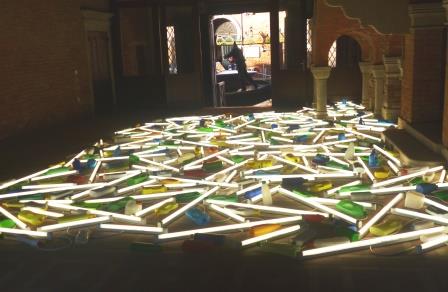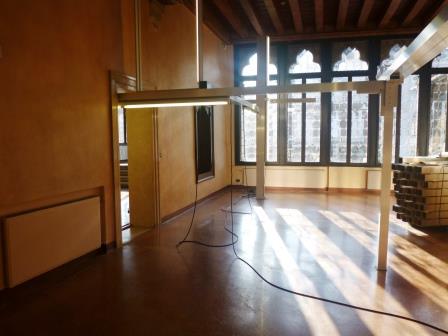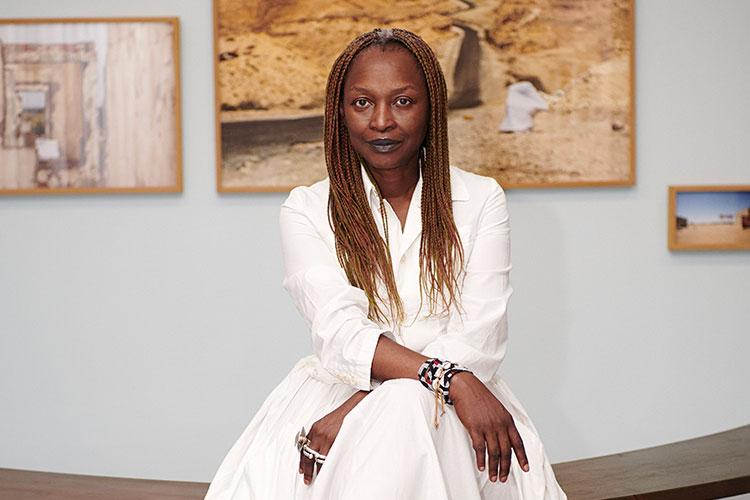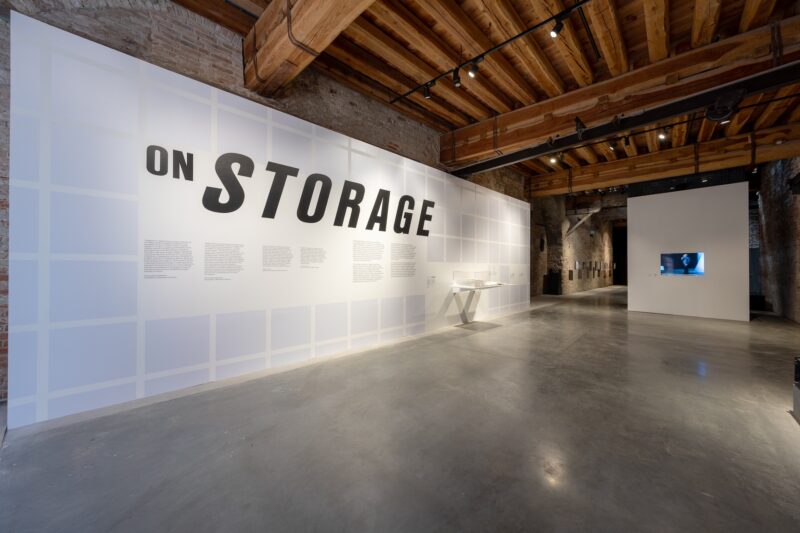Perhaps I should have gone to the Venice Biennale’s opening week, but I went instead during the last few days in late November. True, quite a bit has closed by then, but there’s still more than enough art to fill a long weekend – and you can look back at what the critics decided, and disagree. Two of my favourites were little-noticed large scale transformative installations which related rather closely to each other. Both made the most of not being on the main sites – so they were harder to find, but integrated more fully with the city. The essence of Venice is water meets light meets history, so there’s a certain logic to featuring fluorescent tubes in 18th century palazzos overlooking canals. Long-underrated veteran Bill Culbert lit up the eight connected spaces of New Zealand’s Front Door Out Back.
Cupboards, tables and wardrobes were energised by being literally pierced by light, and in one room opening on to a canal-side terrace, the light seemed to have washed in with the floating detritus to form an everyday epiphany – though one which could also be read as a city jostling too close to the water. Pedro Cabrita Reis wasn’t Portugal’s official artist, but that didn’t stop his ‘collateral event’ a remote whisper being a highlight. The atmosphere was quite different, blending the work into the space rather than bringing the world so explicitly in. Reis set up a sort of double intersection, as the outlines of alternative rooms made by light cut through the palazzo’s dividing walls; and the artificial light cut through the natural light streaming in at the windows. It’s a pity on this evidence that Dan Flavin never had a solo show at the Biennale…
Most days art critic Paul Carey-Kent spends hours on the train, traveling between his home in Southampton and his day job in Surrey. Could he, we asked, jot down whatever came into his head?









